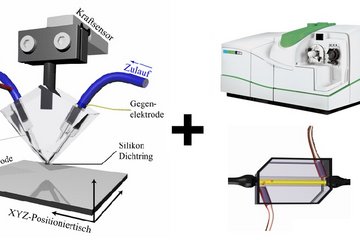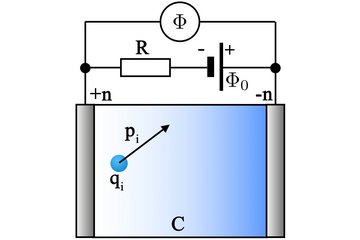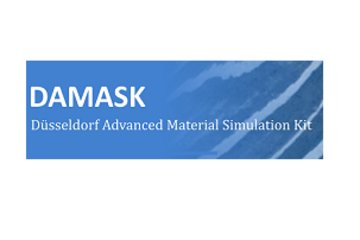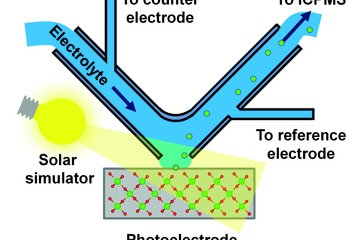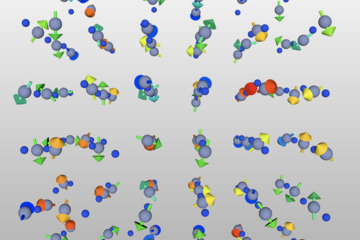All genres
1.
Journal Article
Interaction of platinum nanoparticles with graphitic carbon structures: A computational study. ChemPhysChem 14 (13), pp. 2984 - 2989 (2013)
2.
Journal Article
The impact of spectator species on the interaction of H2O2 with platinum – implications for the oxygen reduction reaction pathways. Physical Chemistry Chemical Physics 15 (21), pp. 8058 - 8068 (2013)
3.
Journal Article
Computational Study of Pt/Co Core-Shell Nanoparticles: Segregation, Adsorbates and Catalyst Activity. Journal of Physical Chemistry C 116 (29), pp. 15432 - 15438 (2012)
4.
Journal Article
Theoretical study of twin polymerization – From chemical reactivity to structure formation. Macromolecular Theory Simulations 21 (9), pp. 615 - 628 (2012)
5.
Journal Article
1-Azido-1-Alkynes: Synthesis and Spectroscopic Characterization of Azidoacetylene. Angew. Chem. 124, pp. 1 - 5 (2012)
6.
Journal Article
Hydrogen peroxide electrochemistry on platinum: Towards understanding the oxygen reduction reaction mechanism. Physical Chemistry and Chemical Physics 14, pp. 7384 - 7391 (2012)
7.
Journal Article
Viability of 4,5-Dihydro-1,2,3,4-oxatriazoles Reinvestigated. Chemistry-A European Journal 17 (20), pp. 5539 - 5543 (2011)
8.
Journal Article
Novel carbonyl iron-bismuth clusters - Synthesis, structure, CO2 insertion and potential as molecular precursors for BiFeO3. Journal of Organometallic Chemistry 696 (8), pp. 1647 - 1651 (2011)
9.
Journal Article
Trendberichte Theoretische Chemie 2010 - Tensorzerlegungen. Nachrichten aus der Chemie 59 (3), pp. 284 - 286 (2011)
10.
Journal Article
Tensor decomposition in post-Hartree-Fock methods. I. Two-electron integrals and MP2. Journal of Chemical Physics 134 (5), 054118, pp. 1 - 12 (2011)
11.
Conference Paper
Mesoscale simulation of network formation and structure, combining molecular dynamics and kinetic Monte Carlo approaches. European Polymer Congress 2011, Granada, Spain, June 26, 2011 - July 01, 2011. (2011)
12.
Talk
Electrochemistry of H2O2 on platinum: Towards understadning ORR. Electrochemistry 2012 - Fundamental and Engineering Needs for Sustainable Development (GDCh Meeting), München, Germany (2012)
13.
Talk
Hydrogen peroxide electrochemistry on platinum: Towards understanding the oxygen reduction reaction mechanism. 63rd Annual Meeting of the International Society of Electrochemistry, Prague, Czech Republic (2012)
14.
Talk
Mesoscale simulation of network formation and structure, combining molecular dynamics and kinetic Monte Carlo approaches. European Polymer Congress 2011, Granada, Spain (2011)
15.
Talk
Mathematical Methods in Quantum Chemistry. Workshop - Mathematical Methods in Quantum Chemistry at Mathematisches Forschungsinstitut, Oberwolfach, Germany (2011)
16.
Talk
Challenges for Theory in Electrochemistry. Minisymposium "Challenges for Theory in Electrochemistry", MPI für Eisenforschung GmbH, Düsseldorf, Germany (2010)
17.
Talk
Mesoscale simulation of interpenetrating networks formation by polymerization of silicon spiro compounds. EUPOC2010 – Hierarchically Structured Polymers, Gargnano, Italy (2010)
18.
Talk
Tensor Decomposition in Electronic Structure Theory. 2nd Minsymposium for "Tensor Decomposition in Electronic Structure Theory", MPI für Eisenforschung GmbH, Düsseldorf, Germany (2010)
19.
Talk
Perspectives in Quantum chemistry for Electrochemistry. Minisymposium "Perspectives in Quantum chemistry for Electrochemistry", Center for Electrochemical Sciences, Ruhr-Universität Bochum, Germany (2010)
20.
Poster
Oxygen Reduction Reaction on Pt-Nanoparticles: A Density-Functional Based Study. 46th Symposium on Theoretical Chemistry, STC2010, Münster, Germany (2010)






